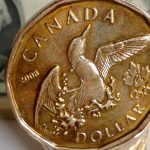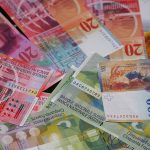 On Thursday gold for delivery in August traded within the range of $1,209.00-$1,217.00. Futures closed at $1,210.15, edging down 0.14% compared to Wednesday’s close. It has been the 46th gain in the past 87 trading days and also a second consecutive one. The commodity has dipped 0.05% so far during the current month, following a 5.77% slump in May. The latter has been the worst monthly performance since November 2015.
On Thursday gold for delivery in August traded within the range of $1,209.00-$1,217.00. Futures closed at $1,210.15, edging down 0.14% compared to Wednesday’s close. It has been the 46th gain in the past 87 trading days and also a second consecutive one. The commodity has dipped 0.05% so far during the current month, following a 5.77% slump in May. The latter has been the worst monthly performance since November 2015.
On the Comex division of the New York Mercantile Exchange, gold futures for delivery in August were edging up 0.33% on Friday to trade at $1,214.15 per troy ounce. The precious metal went up as high as $1,215.65 during late Asian trade, while the current daily low was at $1,209.50 per troy ounce, recorded during the early phase of the Asian trading session.
The US Dollar Index, a gauge reflecting the relative strength of the greenback against a basket of 6 other major currencies, was inching down 0.06% on the day at a level of 95.50, after reaching 95.48 earlier. The index has fallen 0.38% so far in June, after advancing 3.04% in May. The latter has been the strongest monthly performance since November 2015, when the dollar gauge rose 3.29%. Weaker dollar usually favors demand for gold and other dollar-denominated commodities, as they tend to become cheaper to holders of other currencies.
Today gold trading may be strongly influenced by the key government report on US employment conditions. Employers in all sectors of economy in the United States, excluding the farming industry, probably added 162 000 new jobs in May, according to the median forecast by experts, after a job gain of 160 000 in April. The latter has been the slowest growth rate since September 2015, when a revised down figure of 137 000 was reported. Total non-farm payrolls account for 80% of the workers, who produce the entire Gross Domestic Product of the United States. Therefore, in case of a larger-than-expected gain in jobs in May, demand for the US dollar would be strongly supported, while this would also trigger a strong bearish impulse for gold.
At the same time, the rate of unemployment in the country probably dropped to 4.9% in May, according to market expectations, from 5.0% in April. If expectations were met, this would be the lowest unemployment since February. The Bureau of Labor Statistics will release the official employment report at 12:30 GMT.
A separate report by the US Census Bureau may reveal that the total value of factory orders in the country expanded 0.9% in April compared to March, according to the median estimate by experts, following a revised up 1.5% surge in the preceding month. The latter has been the steepest increase since June 2015. In case the general index of new orders increased at a faster-than-anticipated rate, this would trigger a moderate bullish impulse for the US dollar and a moderate bearish impulse for gold, as it implies future growth acceleration. The official data are due out at 14:00 GMT.
Last but not least, the monthly survey by the Institute for Supply Management (ISM) may show that activity in United States’ sector of services increased at a slightly lower pace in May from a month ago, with the corresponding non-manufacturing PMI coming in at a reading of 55.5, according to the median forecast by experts, down from a level of 55.7 in April. The latter has been the highest PMI reading since November 2015, when the gauge was reported at 55.9. If expectations were met, May would be the 77th consecutive month, when the gauge stood in the area above 50.0. In case the PMI slowed down more than anticipated in May, this would have a strong bearish effect on the US Dollar and a strong bullish effect on the yellow metal. The ISM is to release the official reading at 14:00 GMT.
This is another set of key macroeconomic data, which will be taken into account by the FOMC members before their policy decision at the upcoming meeting in June. Earlier on Friday, in a statement, the Federal Reserve President for Chicago, Charles Evans, noted that a “more aggressive” policy tightening may pose a risk to economic activity.
Meanwhile, silver futures for delivery in July were up 0.78% on the day to trade at $16.110 per troy ounce, after going up as high as $16.140 a troy ounce during the early phase of the European trading session.
Daily and Weekly Pivot Levels
By employing the traditional calculation method, the daily pivot levels for gold are presented as follows:
Central Pivot Point – $1,212.05
R1 – $1,215.10
R2 – $1,220.05
R3 – $1,223.10
S1 – $1,207.10
S2 – $1,204.05
S3 – $1,199.10
By using the traditional method of calculation again, the weekly pivot levels for gold are presented as follows:
Central Pivot Point – $1,223.93
R1 – $1,241.47
R2 – $1,269.13
R3 – $1,286.67
S1 – $1,196.27
S2 – $1,178.73
S3 – $1,151.07





